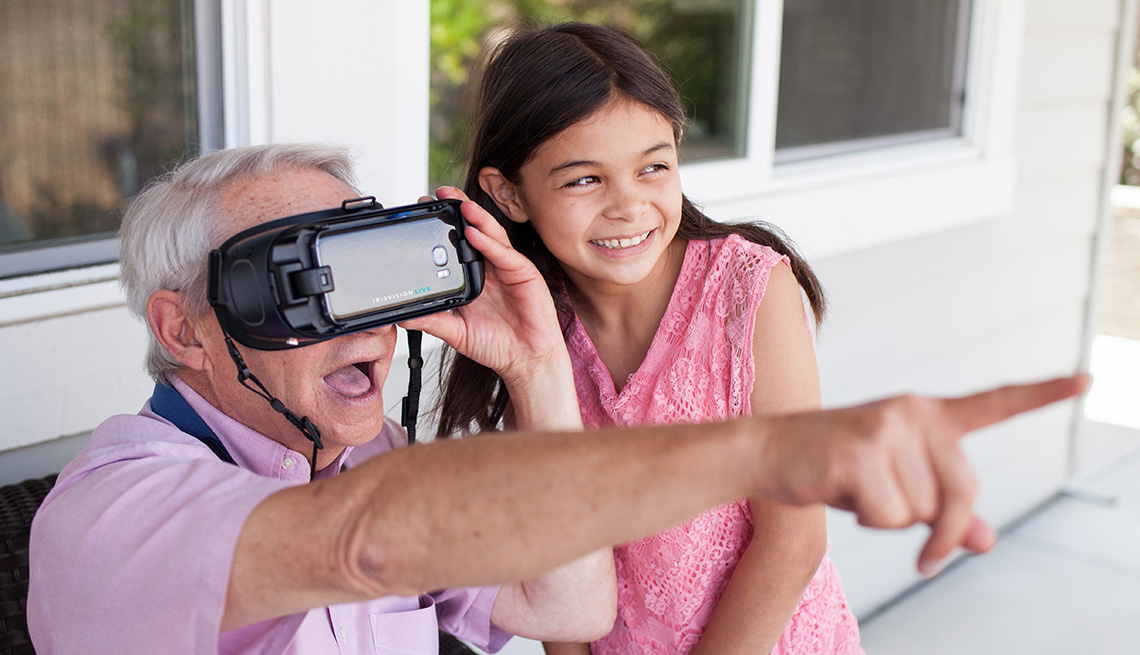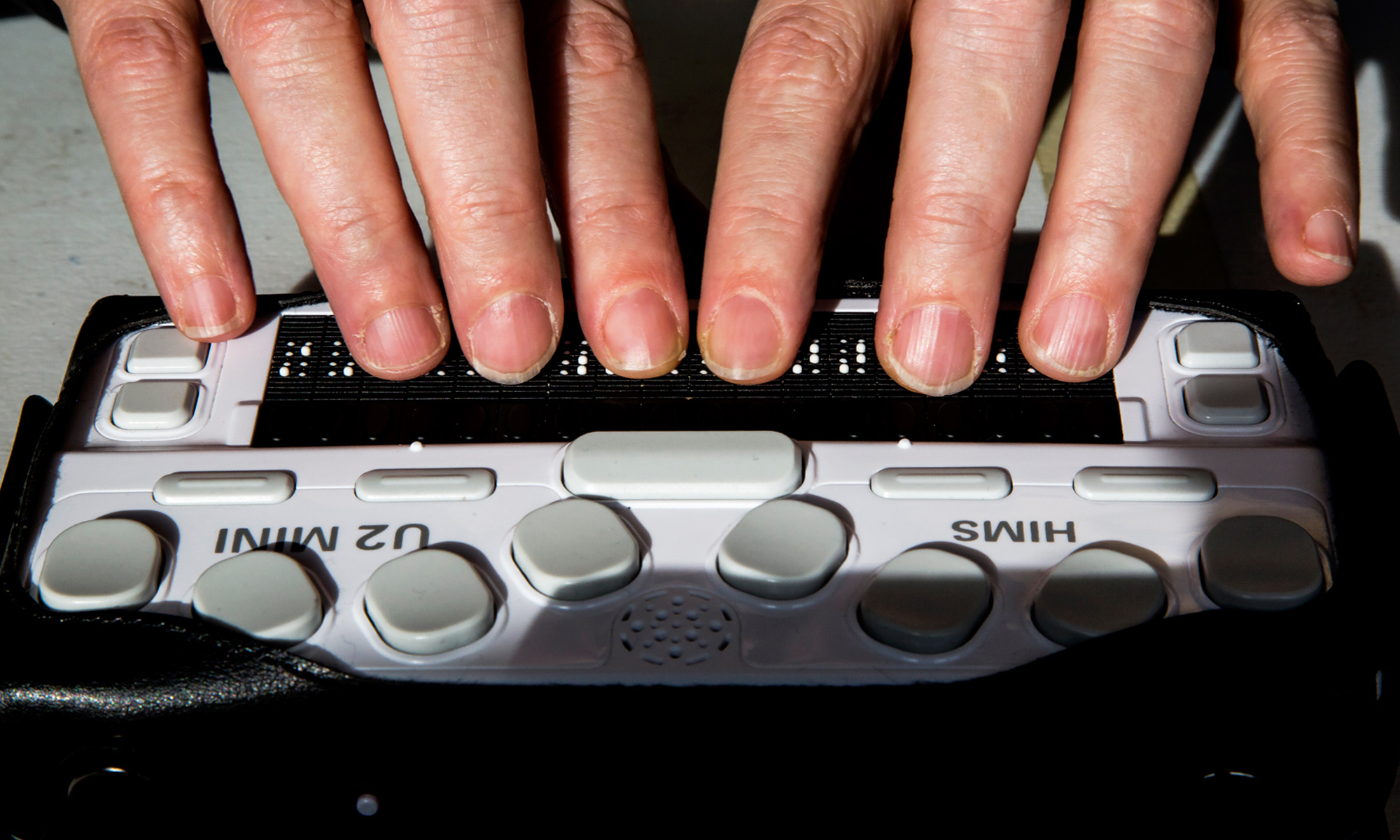Empowering Independence With Assistive Modern Technology for the Blind
The integration of assistive modern technology into the lives of people with visual problems represents a considerable innovation in promoting independence and self-sufficiency. From innovative display viewers to sophisticated clever walking sticks, these devices not just enhance daily navigating and interaction but likewise empower individuals to involve meaningfully in numerous aspects of life. As we discover the myriad advantages and real-world applications of these technologies, it ends up being critical to check out the underlying aspects that add to their performance and the capacity for future developments in this vital field.
Introduction of Assistive Technology

The advancement of assistive technology is based in principles of inclusivity and empowerment. Technologies in software application, equipment, and sensory improvements offer customers with options customized to their certain demands. From screen visitors that transform message to speech, to responsive gadgets that communicate info with touch, these devices transform the method individuals involve with their surroundings.
Along with functional applications, assistive modern technology fosters better social inclusion and participation in various markets, consisting of education and work (Screen readers for the blind). As research and development remain to advance, the possibility for assistive technology to additionally improve the lives of aesthetically damaged people stays promising, leading the way for a much more fair culture where everybody can flourish
Sorts Of Assistive Devices
A range of assistive devices have arised to sustain people with visual disabilities, each made to satisfy certain demands and improve day-to-day functioning. These gadgets vary from low-tech options to modern advancements, supplying diverse alternatives for customers.
Low-tech devices consist of magnifiers and large-print products that aid in reading and writing. Braille tools, such as Braille slates and stylus pens, make it possible for tactile analysis and interaction. Positioning and mobility help, like white walking canes, aid individuals navigate their environment securely.
On the greater end of the spectrum, digital magnifying systems and screen viewers provide substantial assistance. Digital magnifiers enable customers to increase the size of text and images on displays, while screen readers convert electronic content into synthesized speech, facilitating accessibility to info on mobile phones and computer systems.
Smart device applications also play a vital role, offering features like text recognition and navigating support. Wearable modern technology, such as smart glasses furnished with augmented reality, is becoming an encouraging tool to improve situational understanding.
Advantages of Assistive Innovation
The assimilation of assistive technology dramatically boosts the lifestyle for people with aesthetic disabilities. These technologies equip customers by advertising independence, enabling them to navigate their settings better and carry out daily tasks with higher simplicity. For circumstances, screen readers and zoom software allow people to access navigate here digital information, fostering academic and expert opportunities that may have previously run out reach.
In addition, assistive devices such as smart walking sticks and general practitioners applications give real-time navigation aid, enhancing movement and safety. This enhanced freedom not only enhances self-confidence however likewise encourages social engagement, enabling users to participate even more fully in their communities.
Assistive technology also promotes communication, assisting users get in touch with others via voice acknowledgment and text-to-speech applications. This capability is essential for preserving connections and accessing vital information.
Additionally, the customization choices offered with many assistive innovations guarantee that customers can customize devices to their certain demands, further improving functionality and performance. On the whole, the benefits of assistive modern technology for individuals with aesthetic impairments are profound, advertising an extra inclusive culture where every person can my website pursue their desires and objectives.
Study and Success Stories
Highlighting the transformative impact of assistive modern technology, various study highlight just how people with visual problems have actually effectively incorporated these tools into their every day lives. One engaging example entails an university student that made use of screen reading software program to navigate online sources and academic products efficiently. This innovation not only facilitated her education and learning however additionally boosted her self-confidence in taking part in conversations and group tasks.
Another situation research features an expert that employs a smart device application developed for navigating and things recognition. By using this application, he has gained back autonomy in both his individual and job environments, allowing him to commute individually and engage with colleagues a lot more properly.
In addition, a retired person shared her experience with braille e-readers, which allowed her to access a substantial variety of literary works and stay connected with her area with publication clubs.
These success tales highlight the vital role of assistive technology in cultivating self-reliance, boosting quality of life, and promoting social assimilation for people with visual impairments (Braille displays and notetakers). By embracing these cutting-edge tools, users can conquer difficulties and take opportunities that add to their specialist and individual satisfaction

Future Trends in Assistive Innovation
Advancement in assistive innovation is poised to redefine the landscape of assistance for individuals with aesthetic check over here disabilities. Emerging fads emphasize the integration of expert system (AI) and equipment knowing, which enhance the capability of gadgets that assist with navigation and information access. AI-driven applications are now qualified of translating visual information in real-time, allowing users to involve with their setting more independently.
Moreover, the advancement of wearable innovation is progressing swiftly. Smart glasses equipped with augmented truth (AR) can provide audio summaries of environments, transforming how users connect with public areas. These tools not just promote autonomy yet likewise foster social inclusion.
Additionally, the Web of Points (IoT) is making homes smarter, permitting smooth connectivity between assistive devices and everyday devices. This connectivity empowers customers by allowing automated feedbacks and voice-activated controls customized to individual demands.
Final Thought
To conclude, assistive technology plays a crucial role in empowering individuals with aesthetic impairments by improving their self-reliance and engagement with their surroundings. The diverse variety of gadgets and applications available not just assists in navigating and communication yet likewise advertises social integration and possibilities for personal and expert growth. As innovations continue in this area, the capacity for boosting the lifestyle for those with aesthetic impairments will certainly increase, promoting better autonomy and empowerment.

 Spencer Elden Then & Now!
Spencer Elden Then & Now! Jason J. Richter Then & Now!
Jason J. Richter Then & Now! Matilda Ledger Then & Now!
Matilda Ledger Then & Now! Samantha Fox Then & Now!
Samantha Fox Then & Now! Nicholle Tom Then & Now!
Nicholle Tom Then & Now!